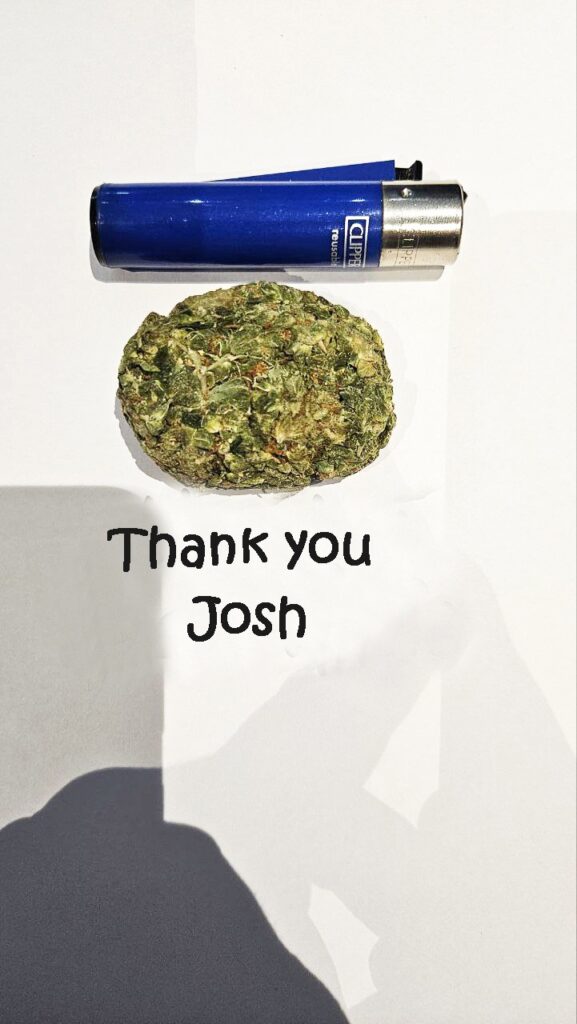Cannabis in Shap Pat Heung: Community Perspectives and Legal Realities

Introduction
Shap Pat Heung is a rural town in Hong Kong’s New Territories, known for its scenic landscape, traditional villages, and a growing blend of old and new lifestyles. Although cannabis remains illegal throughout Hong Kong, including Shap Pat Heung, there’s a noticeable curiosity among residents about its uses, medical applications, and broader global trends surrounding legalization. As attitudes evolve worldwide, Hong Kong’s conservative stance on cannabis has led to a unique intersection of tradition, law, and social views. This article delves into the cannabis conversation in Shap Pat Heung, covering legal aspects, cultural perceptions, and the underground market, and exploring how residents view its potential in the community.
1. The Legal Landscape of Cannabis in Shap Pat Heung
1.1 Hong Kong’s Cannabis Policy
Hong Kong maintains strict anti-drug laws, classifying cannabis as a Schedule 1 drug under the Dangerous Drugs Ordinance (DDO). The DDO, in place since 1969, prescribes stringent penalties for any involvement with cannabis, including possession, trafficking, and production.
- Possession Penalties: A person caught in possession of cannabis may face up to seven years in prison and a fine of up to HKD 1 million. Shap Pat Heung, like all areas in Hong Kong, is subject to these same laws, creating a strong deterrent against open cannabis use.
- Trafficking Penalties: Any involvement in the distribution or trafficking of cannabis brings even harsher consequences, with potential life sentences for offenders. These penalties reflect Hong Kong’s commitment to combating drugs, stemming largely from its historical anti-drug campaigns.
1.2 Enforcement in Rural Areas like Shap Pat Heung
In Shap Pat Heung, law enforcement is vigilant yet faces unique challenges due to the area’s rural nature.
- Local Enforcement Challenges: The town’s many winding paths, isolated villages, and farms make it difficult for authorities to maintain surveillance, contributing to occasional instances of black-market activity. However, police conduct routine checks and often rely on community tips to monitor any illicit activity.
- Community-Based Reporting: With a relatively small, interconnected population, many residents report any suspected illegal activity. This local involvement adds a level of security but also reinforces the societal resistance to cannabis use, especially among older residents.
2. Cultural Attitudes and Social Views on Cannabis in Shap Pat Heung
2.1 Traditional Perspectives on weed in Shap Pat Heung
Shap Pat Heung has a strong, traditional culture where cannabis, like most drugs, is seen with suspicion and disapproval. Older generations, in particular, view cannabis as harmful and synonymous with crime.
- Stigma and Social Norms: Much of the community, particularly older residents, has been influenced by decades of anti-drug messaging from the Hong Kong government. This deeply ingrained view makes discussions about potential medicinal or recreational legalization challenging within the community.
- Connection to Health Risks: Residents are often more concerned about the potential health risks associated with cannabis, particularly mental health implications for younger users. Health-based resistance often strengthens the stigma around cannabis, as older generations prioritize safety over curiosity.
2.2 Changing Attitudes Among Younger Residents
Though traditional views remain dominant, younger residents in Shap Pat Heung are increasingly aware of global shifts in cannabis policy and attitudes.
- Global Influence and Curiosity: Through media and online resources, younger people are exposed to cannabis’s potential benefits, especially its medicinal properties. They see examples from countries like Canada, parts of the U.S., and Thailand, which have either legalized or decriminalized cannabis to some extent.
- Emerging Conversations: While open discussions are rare, some younger people quietly advocate for exploring cannabis’s medicinal benefits. They argue that strict regulation, rather than outright prohibition, may lead to safer use and that cannabis could provide new medical solutions, especially for those with chronic pain or anxiety.
3. The Underground Market for Cannabis in Shap Pat Heung
3.1 Black Market Activity on weed in Shap Pat Heung
As in other parts of Hong Kong, the demand for cannabis in Shap Pat Heung is met through the underground market. This market is mostly discreet, relying on word-of-mouth and private connections due to strict penalties.
- Accessing Cannabis: The lack of supply increases costs, making cannabis far more expensive compared to regions where it’s legal or decriminalized.
- Risks of Black Market Products: Without regulatory oversight, the quality and safety of cannabis products vary greatly. Users risk exposure to dangerous contaminants or synthetic additives, posing significant health risks.
3.2 Law Enforcement and Community Vigilance
The illegal cannabis market faces constant threats from local law enforcement and community watch efforts in Shap Pat Heung.
- Regular Raids and Checks: Hong Kong police frequently conduct raids based on intelligence reports or community tips. These actions deter black-market activity and ensure that cannabis use remains largely underground and discreet.
- Community Reporting: Many residents, especially the older ones, feel it’s their duty to report suspected drug activity, often doing so out of concern for community safety. This collective vigilance helps maintain a low profile for any underground cannabis trade.
4. Health and Safety Concerns Surrounding Cannabis
4.1 Public Health Perceptions on weed in Shap Pat Heung
The health risks of cannabis are a focal point in Shap Pat Heung, where many residents are wary of cannabis’s potential impact on mental health, especially for young users.
- Health Education Initiatives: Local anti-drug campaigns highlight cannabis’s potential harms, from dependency risks to negative mental health effects. These initiatives, often seen in schools and community centers, aim to prevent the normalization of cannabis use.
- Concerns Over Mental Health: For parents and educators, the potential for cannabis to impact youth mental health is a significant concern. Studies have shown that heavy cannabis use can exacerbate pre-existing mental health conditions, which influences the cautious attitude in Shap Pat Heung.
4.2 Advocating for Balanced Information on weed in Shap Pat Heung
Despite the stigma, some advocates in Shap Pat Heung suggest that more balanced, research-based information could help residents understand both the risks and potential benefits of cannabis.
- Promoting Education Over Fear: Advocates argue that public education campaigns should move away from fear-based approaches, instead providing clear, factual information. This would empower individuals to make informed decisions about cannabis, even if they ultimately choose to abstain.
- Health Care Professionals’ Role: Including healthcare professionals in community discussions could provide valuable perspectives on cannabis’s potential as a medicine, particularly for conditions like chronic pain or epilepsy.
5. Economic Considerations and Future Opportunities
5.1 Potential Economic Benefits of Legalization
Proponents of cannabis reform often highlight the economic advantages that could arise if Hong Kong were to implement a regulated cannabis market, a view shared by some residents in Shap Pat Heung.
- Job Creation and Economic Growth: A regulated cannabis industry could create numerous job opportunities across various sectors, from agriculture to retail. This potential economic boost could be particularly valuable in rural communities, where job diversity is often limited.
- Tax Revenue for Public Services: For Shap Pat Heung, this revenue could mean improved community resources and facilities.
5.2 Barriers to Economic Reform
Despite the potential benefits, major obstacles remain for any form of cannabis legalization in Shap Pat Heung or Hong Kong more broadly.
- Cultural and Social Resistance: The conservative outlook on cannabis makes any discussion of legalization challenging. For many, the potential economic benefits do not outweigh the perceived social and health risks, particularly with fears about youth exposure.
- Governmental and Legal Hurdles: Hong Kong’s government has consistently maintained its anti-cannabis stance. In order to see any policy change, there would need to be a major shift in both government and public opinion, which is unlikely in the immediate future.
6. Medical Cannabis as a Possible Alternative
6.1 Global Examples of Medical Cannabis Use
Medical cannabis programs in countries like Canada, Israel, and parts of the United States offer models for controlled, therapeutic cannabis use, which some residents in Shap Pat Heung find appealing.
- Medicinal Potential for Chronic Conditions: For people suffering from chronic pain, epilepsy, or other debilitating conditions, cannabis has shown promise in easing symptoms.
- Government-Regulated Access: Hong Kong could look to these countries as examples, providing carefully controlled access to medical cannabis to minimize misuse while maximizing benefits for patients in need.
6.2 Community Perceptions of Medical Cannabis
Medical cannabis is generally seen in a more positive light, even among those who oppose recreational use. In Shap Pat Heung, some residents believe that a regulated, medical-only cannabis policy could provide relief to patients without opening the door to full legalization.
- Potential for Acceptance Among Older Generations: If medical cannabis were properly regulated, older residents might be more open to its use, as it aligns with traditional values of health and well-being.
- Supporting Patient Rights: Advocacy for patient rights in Shap Pat Heung emphasizes the importance of accessible healthcare options. Supporters argue that denying medical cannabis potentially limits treatment options for those in need.
Conclusion
Cannabis remains a highly regulated, socially sensitive topic in Shap Pat Heung. Although illegal and widely stigmatized, there is growing interest in understanding its medical applications, economic potential, and broader societal impact. For this rural community, cannabis discussions are layered with cultural, legal, and social complexities, requiring a delicate balance between tradition and modernization.

Message Josh on = joshchris385@gmail.com.
he sorted us in style during our little vacation .
Top quality 420bud of different strains you can find around.
You won’t regret getting in touch with him . Highly recommended local plug his telegram / https://t.me/joshlegitplug
we did give it a try and the delivery guy delay like ten minutes but he finally arrived and woow the buds were so good and thank u so much josh.
His dealings are smooth and fast and his buds are so so good.

We were lucky over here Me and my crew enjoy our trip our deliveries was very safe. we ordered both Satis and Indis It was a great experience and great feeling as we mix them both and have a good time.
I contacted him on his telegram and due to security reasons he requested crypto payments which i did, about 30minutes later my dope was dropped at my requested location great guy!!!i highly recommend.
Woow…thank so much for the buds flowers I purchased 10g (this is minimal order) for $100, everything went smoothly i paid with crypto currency as first timer in the morning and tonight he accepted cash on delivery .
“Absolutely love how easy and seamless the process was! The delivery was quick, and the quality is always top-notch. You’ve earned a loyal customer!”
“One hit and suddenly all the stress in the world seemed irrelevant — everything made sense, or maybe I just didn’t care anymore — either way, Josh has unlocked the ultimate level of calm that I never knew existed.”